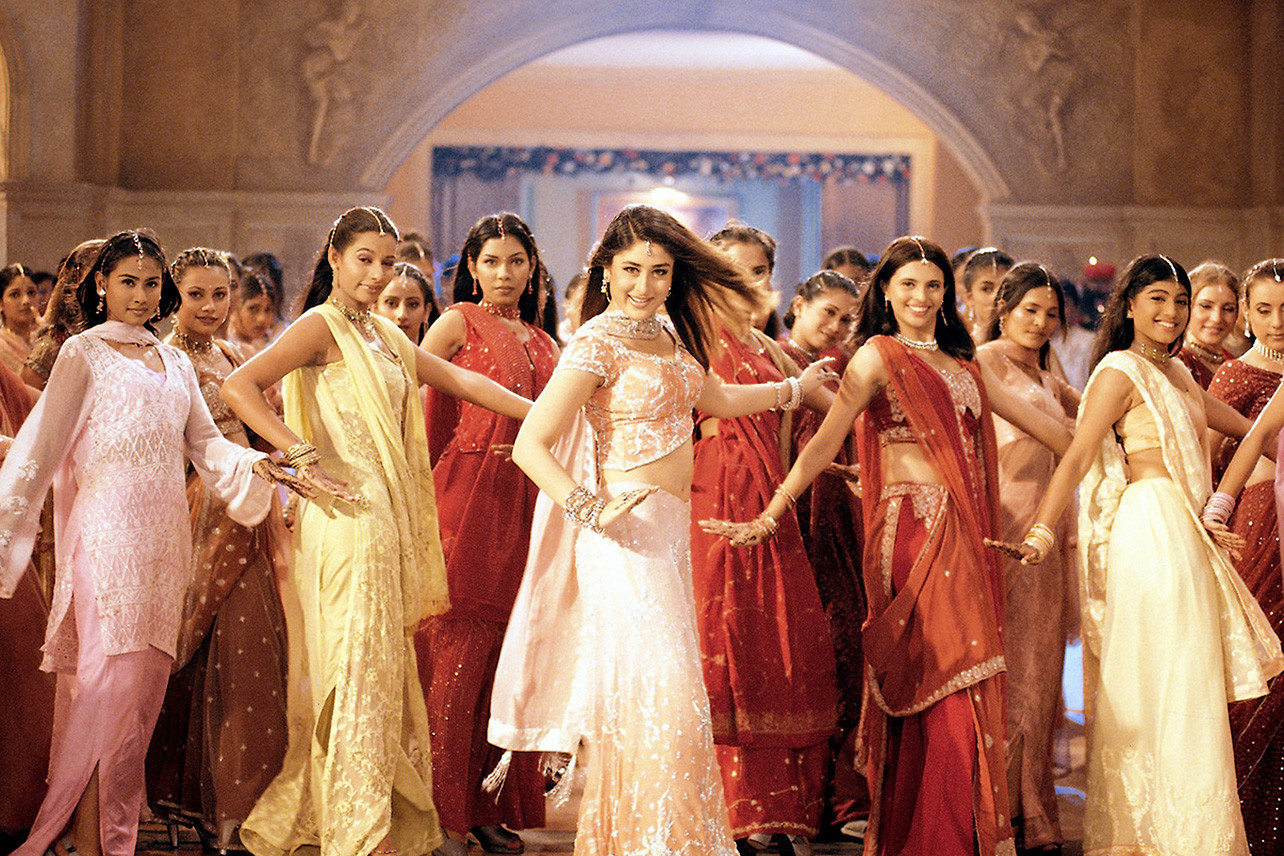From Saira Banu to Sonam Kapoor, Bollywood, the Indian film fraternity, has been a part of Indian society for more than 106 years. In recent years, however, Bollywood has become an integral division of Indian society. It has become a source that has a large impact on the thoughts, dreams, and goals of the Indian population. Another device that influences the Indian community on a monumental scale is tradition. Traditions have been the backbone of Indian society for millenniums. They symbolize the rich history our culture has to offer to the world and influences many aspects of society today — clothing, food, television, and even politics.
The influence Bollywood has had on our traditions is particularly fascinating. Films have become an important source of outlook. The citizens of India have begun to view and create films in a modern manner. Movies such as Lust Stories, a film which released in 2018, features four women diving into a journey of rediscovering their sexualities. Another film, Talvar, directed by Meghna Gulzar, exposes the audience to the incriminating facts and truths on the rape culture that exists in India. Films, and subsequently, traditions, are transforming and modernizing, with feminism becoming a central component in both life and art.
These films have been created to primarily educate the Indian population and expose them to the hard truths our society possesses. Still, a large portion of Indian traditions revolve around arranged marriages and the misogynistic perspective of women. The patriarchal society was and is reflected in films — demeaning perspectives and traditions were often a part of daily life and were more likely encouraged within Indian society.
They viewed women as objects instead of human beings, and Bollywood played a large role in creating and reinforcing such viewpoints.
One example of the misogynistic perspective can be found in the 2006 film Vivah, directed by Sooraj Barajatya, which had the main actress “typified as a girl who would wake up early, sing bhajans (hymnals), worship her husband and cook for the family”, according to a review in India Today. This movie depicted that the only aspirations a woman has are to take care of her husband and his family — nothing else. Another example would be the 2016 film, Sultan, directed by Ali Abbas Zafar, which is about a female wrestler who is about to qualify for the Olympics but gives up on pursuing her career after marriage to support her husband’s career. This is because making sacrifices for their families is what is expected of women in India — women are taught not to care about themselves, but about their families; more specifically, the patriarchy. The most effective and popular example of a misogynistic and well-received film is the Yash Raj produced film, Kabhie Khushi Kabhi Gham. Kabhie Khushi Kabhie Gham is a patriarchal Bollywood film. The film was directed by Karan Johar and was released in 2001. The two hundred and twenty-minute blockbuster depicts the “duty” of what the Indian patriarchy defines a married women’s life to be revolved around. Through the exemplification of the film Kabhie Khushi Kabhi Gham and various other contemporary movies, I will discuss the stereotypes that women have been labeled with in the past and how Bollywood today is making an effort to challenge such stereotypes and taboos.
Kabhie Khushi Kabhie Gham is a well-received Bollywood film, which centralized women to only be important when it comes to being nurturing and family oriented. The film symbolizes that married women only have one motive, and that is to oblige to their husbands and the elders of their family. This displays the submissiveness that is depicted in the film. The Karan Johar directorial film dictates that women have a lower position in India’s patriarchal society, and instead of challenging this quota, the film embellishes the sexist views. Women’s rights in India have always been a controversial subject. Journalist Deepa Narayan from The Guardian states, “Women’s oppression starts innocuously: it occurs in private life, within families, with girls being locked up in their own homes. This everyday violence is the product of a culture that bestows all power on men, and that does not even want women to exist.” Bollywood films adapt to this culture and create films that would encourage and promote the idea of a submissive woman. Films such as Vivah and Sultan are results of promoting the image of a submissive woman. The submissive woman listens to her elders, does not fight back against the patriarchy, and is content being ignorant. Directors such as Karan Johar have played a large role in creating such submissive images of women in India.
Karan Johar is a well-established Bollywood director and producer who is known for his family oriented romantic films. Most of his films focus on the values and social controversies that revolve around the Indian culture. After the release of his patriarchal film, Kabhie Khushi Kabhi Gham, Johar also began to revolutionize his films. His first controversial film was Kabhi Alvida Naa Kehna, which released in 2006. The film circulates around two couples and their respective families — one married couple (Shah Rukh Khan and Preity Zinta) who have fallen out of love with each other, and another who have recently married but are not in love (Abhishek Bachchan and Rani Mukerji). The film highlighted concepts like divorce, adultery, and sexual compatibility — issues that are largely taboo in India — and therefore created an upheaval of disapproval towards the film. The film surprisingly did well in the box office, collecting revenue of approximately 2 million dollars. The reason why this film is considered a revolutionary film is that, for the first time in Bollywood, a filmmaker was celebrating the importance of choice. The film accentuated that everyone has the right to choose who they want to love, and for a country where 90% of marriages are arranged, this was a big deal.
After the release of Kabhi Alvida Naa Kehna, Karan Johar began to focus on breaking taboos in Indian society. He produced films like Wake Up Sid, which released in 2009, and My Name Is Khan, which released in 2010. Wake up Sid revolves around being passionate about our life goals. The film speaks highly on not giving up and creating a place in society for ourselves using merit. In a country where corruption rates are constantly high, the film touched many hearts and worked as an eye-opener towards the younger generation. My Name Is Khan is a movie about the journey of an Indian Muslim, Rizwan Khan, who decides to embark on a mission to tell the President of the United States of America that he is a Muslim, his last name is Khan, but he is not a terrorist. This film was revolutionary for not just India but also America. It was the highest buyover for any Indian film ever made — the movie made approximately 49 million dollars. The film displays the negative treatment and torture Muslims had to go through after the horror of 9/11 because of their religion and last names. Such raw and tantalizing work made Karan Johar a well respected and highly regarded individual in the Indian film fraternity — yet, even after such great breakthroughs in Bollywood, Karan Johar refused to put a stop to sexism, a theme which has shown its identity through Bollywood films over and over again.
Sexism is not an issue that has been newly discovered, but has been around since the beginning of Indian cinema. In 2017, there was a study done where researchers utilized 4,000 films (ranging from the 1950s to 2016) to decipher if Bollywood films still carried sexist ideologies. The study concluded that “Female characters are still mostly described with surface-level qualities, such as attractiveness and beauty — whereas men are represented as ‘strong’ and ‘successful.’”
Although sexism remains to be a significant issue within Indian society and cinema, Bollywood has gradually begun to introduce films that feature gender equality.
An example of this gradual but astounding change is the film NH 10. A film released in 2015, NH 10 focused around a scorned woman’s journey towards revenge. The film follows and focuses on the rape culture and lack of protection the Indian government and society offers. Navdeep Singh, the director, focuses on the power a female carries and how that power is all she needs to protect herself, even in the direst of circumstances. Another movie that pushed the boundaries of patriarchy in India is the film Parched, which released in 2015. Leena Yadav, the director of Parched, describes the journey of four women settled in Rajasthan — a wife, a mother, a dancer, and a child, who talk about men, sex, and life struggles. The film dwells deeper into the abuse of the patriarchy and how these four women work together to be rid of their demons and create a new life for them away from the hell that was burdened on them.
Such films have been created to demonstrate how confining and suffocating the patriarchy has always been. By making such films, Bollywood is finally taking its first steps towards a brighter and stronger future. Films like NH 10 and Parched, which feature gender equality, also display the change that India drastically needs.
If the entire Indian film fraternity vocalizes and protests for this change, there is nothing that the females of this world cannot conquer.
The audience can also help make a positive change in Bollywood by searching for and supporting films that centralize gender equality. Bollywood has begun to display a ray of modernism through films like Parched and NH 10. It is clear that times have begun to change and so have ethical practices, but one can only wish that the community keeps up and follows on this very track. Bollywood is an influential platform, and, if utilized the correct way and for the right things, there is nothing it cannot accomplish.
____
Sources:
Priyanka Srivastava, “Depicting women in Bollywood: The mould never changes,” India Today (October 11, 2014).
Deepa Narayan, “India’s abuse of women is the biggest human rights violation on Earth,” The Guardian (April 27, 2018).
Ananya Bhattacharya, “After analysing 4,000 films, researchers confirm that Bollywood movies are still crazy sexist,” Quartz India (October 23, 2017).


Leave a Reply